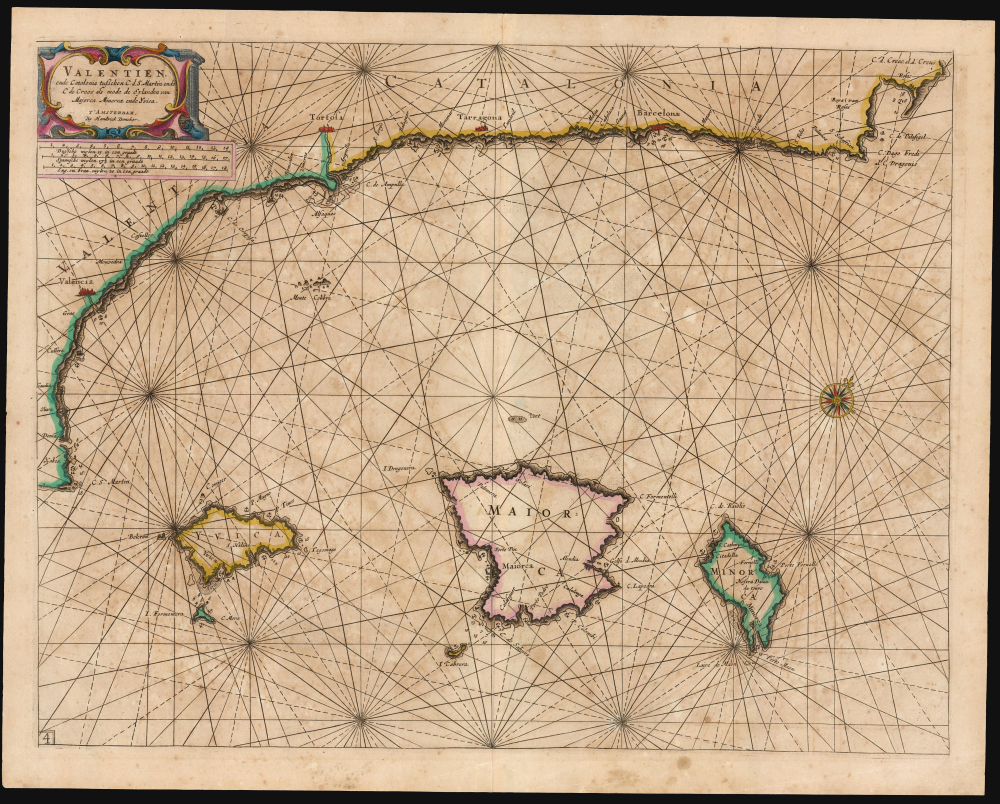1669 Hendrick Doncker Chart of Majorca, Minorca and Ibiza
Balearides-doncker-1669
Title
1669 (undated) 15.25 x 20 in (38.735 x 50.8 cm) 1 : 907000
Description
A Closer Look
The chart is oriented to the northwest. (An apparent aesthetic choice, allowing the presentation of the coastline and primary islands more or less in line horizontally.) Majorca, Minorca, Ibiza, and Formentera are presented in outline, as are the smaller islands of Cabrera, Dragonera, and Monte Colibre - the Columbretes Islands. The coast of Valencia and Catalonia dominates the top part of the chart. All coastlines are delineated in pictorial coastal profiles; the sea is presented in the manner of a chart, with an attractive compass rose and rhumb lines.The chart includes depth soundings and anchorages on several points of each of the islands, and along the Spanish coast. At the upper right, the Gulf of Roses appears, with depth soundings and an anchorage.
The State of the Art
The Balearic Island maps of Blaeu and Jansson, and the Sanson of the middle part of the 17th century, had all derived largely from the 1612 mapping of Hessel Gerrritsz; the present chart represents a fascinating departure from that model, not less because the source of the new navigational information appearing here is not clear. The presence of the depth soundings and anchorages strongly suggests a firsthand source providing data to the Amsterdam chartmaker.Publication History and Census
This chart was engraved by Hendrick Doncker; the few cataloged examples have been variously dated, the earliest (unsupported) date being 1659. We do not see any examples included in hisZee-Atlas ofte Water-Werelt prior to 1669. We see only two auction records for the chart over the past 40 years, and there are no examples cataloged in OCLC.
Cartographer
Hendrick Doncker (1626 - 1699) (a.k.a. Henri Donker) was a Dutch bookseller and publisher of sea charts and nautical atlases active in Amsterdam during the middle part of the 17th century. He maintained a presence on Nieuwe Brugsteeg, Amsterdam. He married Elizabeth Abrahamsd Rensing in 1647. Doncker was somewhat unique to this period in that he did not copy the work of earlier cartographers, instead producing his own map. Moreover, Doncker's charts were widely admired for their constant revision and overall accuracy. In addition to producing his own charts, he also collaborated with Pieter Goos and Anthonie Jacobsz to producing the pilot guide De Zeespiegel. Following his 1699 death, Doncker's remaining stock and valuable map plates were acquired by Johannes van Keulen. He was survived by a daughter, Anna Doncker. More by this mapmaker...

